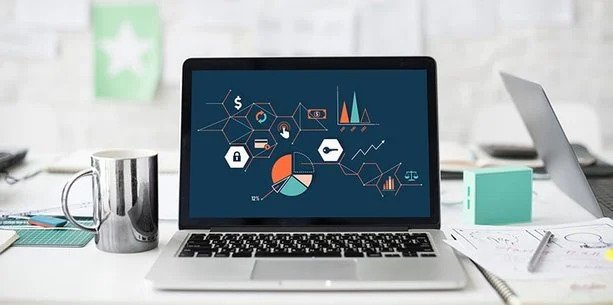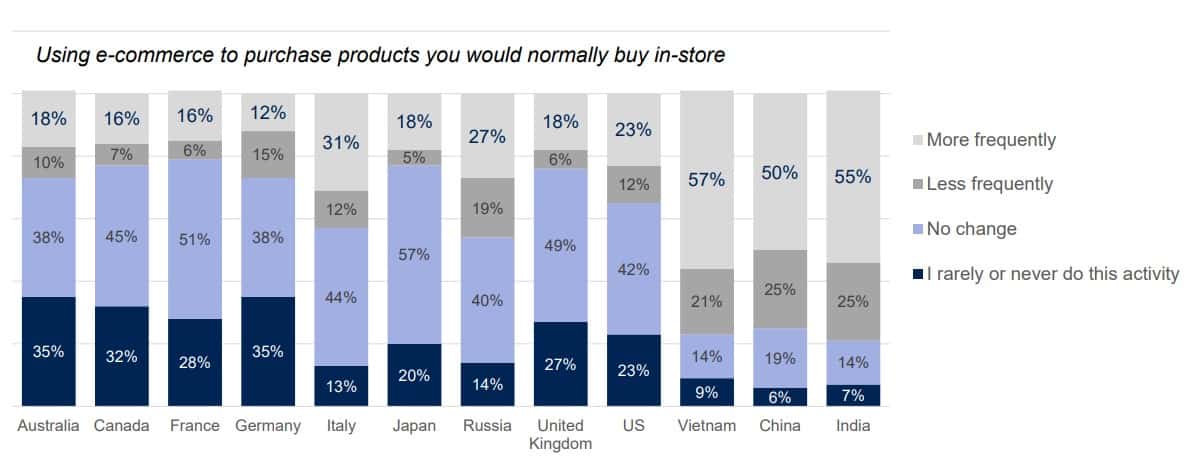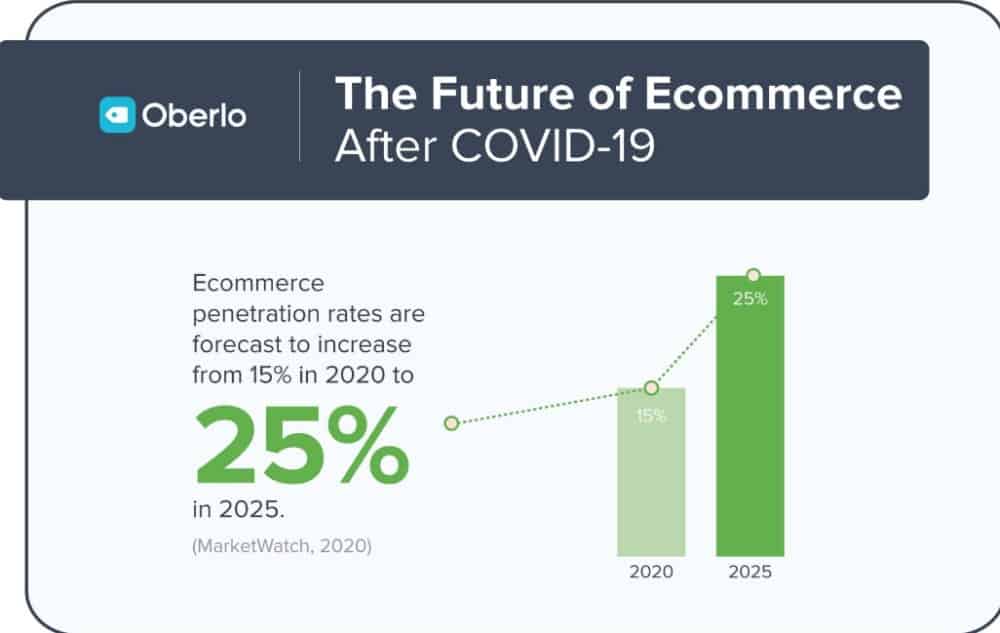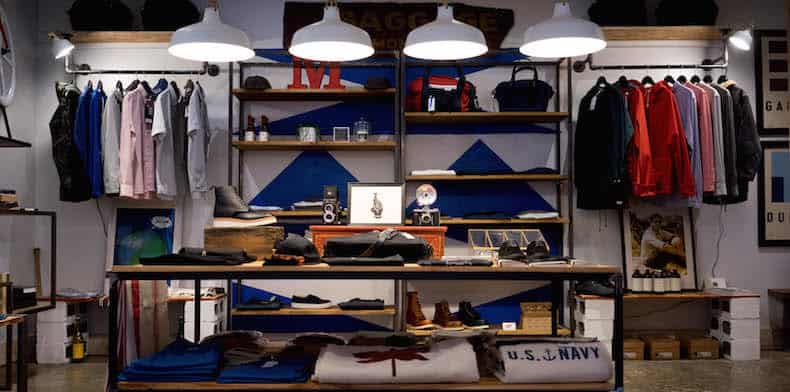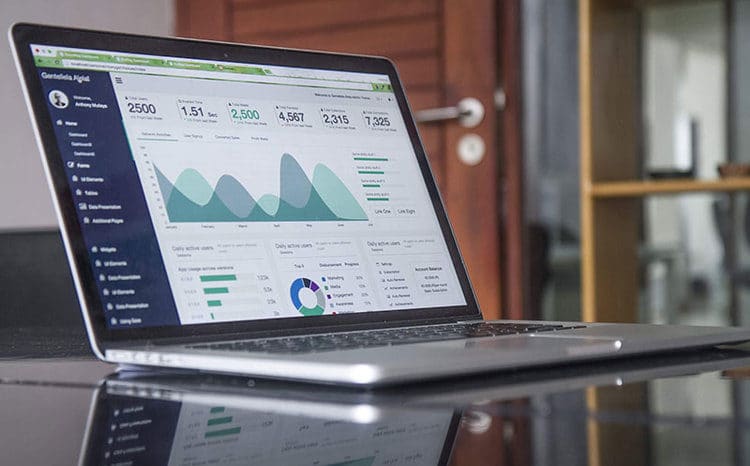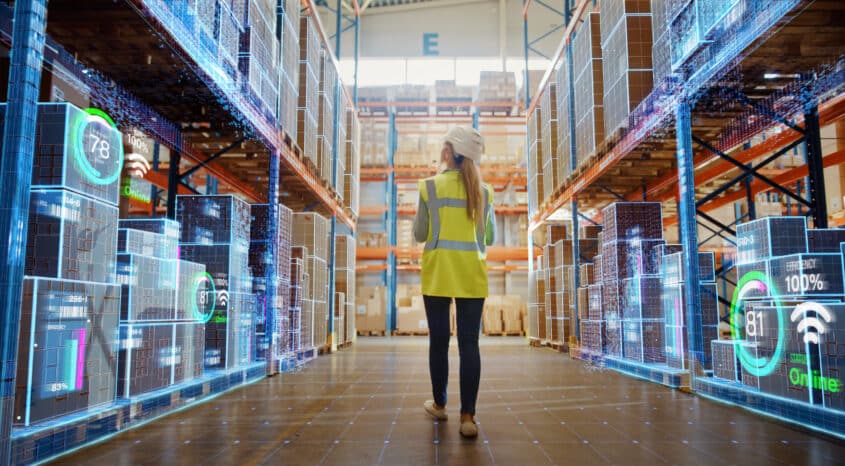The world is a vastly different place right now than it was as little as two months ago. The early months of 2020 will have a profound impact on people across the globe for years to come. The Covid-19 pandemic into which we’ve all plunged will have effects that will last well into the decade.
Aside from the obvious human impacts of the pandemic, commerce is also set to change. The spread of coronavirus and subsequent lockdowns to slow it blindsided many businesses. For the last few weeks, many have been scrambling not merely to recover, but to survive.
Six months after the virus first appeared in Asia, firms are starting to think about the future. Many nations are attempting to transition to a ‘new normal’. That, by definition, means we’re not getting back to business as usual any time soon.
What, then, could be the more permanent implications of Covid-19 for ecommerce? That’s the question we’ll try to answer – as well as possible – here. We’re going to assess how the global pandemic has already reshaped commerce – both online and off. Then, we’ll try to predict the changes that might be here to stay.
The Immediate Commercial Impacts of the Pandemic
One of the scariest things about 2020’s Covid-19 pandemic is the breadth of its impact. The disease itself is highly contagious and has claimed many lives across the globe. Governments have had to resort to drastic measures without a cure or vaccine. Lockdowns, curfews, and quarantines got implemented to slow the virus’s spread.
While necessary, those measures have had an inevitable impact on businesses and economies. In fact, the immediate commercial implications of the pandemic have been profound. Many of them will have knock-on effects which those involved will need to cope with for years to come.
Changes to Consumer Behavior
A city or country that’s locked down is like a different world. Almost every aspect of day-to-day life changes. That includes the process of buying goods of all shapes and sizes. From regular food and groceries to fashion, the Covid-19 pandemic has already shifted consumer behavior.
Most notably, in many places around the world, non-essential stores got forced to close. Consumers, as a result, can’t buy many goods from brick-and-mortar stores. Stores deemed essential – such as those selling food – have broadly remained open. How shoppers use them, however, has shifted a great deal.
1. Panic Buying
The first significant example of altered consumer behavior came in the shape of panic buying. As lockdowns seemed inevitable, customers descended on grocery stores with a vengeance. Panic buying and stockpiling took hold in diverse communities and nations. UK supermarkets had to limit the number of particular items that each shopper could buy. On the other side of the world, in Australia, similar restrictions were also imposed.
According to an academic from Cambridge University, it was all down to ‘fear contagion’. CNBC interviewed Sander van der Linden, an assistant professor of social psychology. He explained the drive behind panic buying:
“When people are stressed their reason is hampered, so they look at what other people are doing. If others are stockpiling it leads you to engage in the same behavior.”
2.Socially Distanced Shopping
Once lockdowns hit, consumers got faced with imposed changes to their shopping behavior. In those stores that stayed open, how you shop often altered dramatically. New ways of protecting staff and social distancing shoppers came into play. Shopper limits, sneeze guards, and new markings were only part of the story for US grocery stores.
Image source: Statista
Brick-and-mortar food stores, then, have had to be agile and make significant changes. That’s only a small part of the story. Retailers across the board have to act to offset the impact of Covid-19. Some businesses, meanwhile, have felt even more significant consequences. The above graph, for instance, shows how UK shoppers’ visits to physical stores changed. Such visits plummeted in only a month.
Closures, Furloughs & Bailouts
In many nations and states, businesses deemed ‘non-essential’ have been forced to close. It’s been a crucial part of the lockdowns imposed by governments to slow the spread of Covid-19. While vital, the closures have had a drastic impact on peoples’ lives and livelihoods.
Experts predict that a vast number of stores forced to close due to Covid-19 will never reopen. In the US, some brands have already announced as much. On the other side of the Atlantic, as many as 20,000 stores could remain permanently shuttered. So many business closures, too, has meant many people out of work – either temporarily or less so.
A vast number of people got laid off across multiple industries. Many of those who haven’t been made redundant got furloughed. If their employers survive the pandemic, they’ll be able to resume work once they reopen. To ensure firms do survive, governments have introduced a raft of bailouts, emergency loans, and other measures.
Image source: BBC
Despite such government action, the economic impact of the pandemic will be drastic. In the first quarter of 2020, the US economy shrunk at its fastest rate for over a decade. It’s in these uncertain circumstances that companies are having to think of the future. For those operating online, there are plenty of other factors to consider, too.
Covid-19 & Ecommerce – The Story So Far
The Covid-19 pandemic hasn’t only affected brick-and-mortar stores. The drastic changes to many peoples’ daily lives have also spilled into the online realm. Throughout the crisis to date, the ecommerce sector has also seen many changes.
Overall Trends
Data on the current pandemic’s impact on ecommerce is now starting to accrue. A couple of months into the crisis, research and studies are emerging. Many suggest that consumers are leaning far more on online shopping.
A study from Business Insider Intelligence and eMarketer shared some fascinating insights. From March, it showed that 74.6% of US consumers would avoid stores if the virus outbreak worsened. Worsened it has, and that suggests far more customers will turn to online stores.
Results from an Ipsos MORI survey in mid-March were even starker. They showed an increased desire to use ecommerce channels. 31% of consumers in Italy and 50% in China said they were ‘more frequently’ purchasing goods online. Not only that, but those were products they’d usually buy in-store:
Image Source: Ipsos MORI
At the time of the study, China and Italy were by far the countries worst affected by Covid-19. The trends shown in those nations, therefore, are likely to get mirrored in other states. Those areas that are now feeling the effects of the pandemic more keenly.
Consumers who already shopped online are turning to ecommerce even more. They’re increasingly buying goods that they’d otherwise purchase in person. Some people, too, are shopping on the net for the very first time. The number of consumers for whom this is true will only rise as lockdowns and other measures drag on.
The impact of Covid-19 on ecommerce, though, isn’t wholly straightforward. Not all demographic groups are responding the same way to the crisis. Nor are all industries feeling the same impacts of changing consumer behavior. Let’s drill down into some more specific detail.
1. Demographic Impact
A recent report on coronavirus and consumer behavior unearthed some fascinating insights. Most notably, the study revealed differences in the impact of the crisis by age and gender.
For instance, the research found that 21% of respondents are shopping online more. That uplift, though, isn’t spread evenly across the generations or genders. 24% of men are using online stores more, as opposed to only 18% of women. The divergence across age groups is even more stark.
Only 8% of so-called baby boomers are shopping online more. The figure jumps to 20% in the case of ‘Gen X’ and 24% for ‘Gen Z’. It’s millennials, though, whose habits have changed most. According to the report, 30% in that age group are buying via the net more.
Such demographic variation is a crucial factor for ecommerce firms to consider. To succeed, companies need to take advantage of any uptick in demand for online shopping. If that uptick is more marked amongst men and millennials, it’s those groups who are most valuable to target. Firms, then, may wish to tailor marketing, inventory planning, and more to that audience.
Changes by Industry
Changes in online shopping behavior haven’t been consistent across sectors, either. Non-essential brick-and-mortar stores have closed. That’s seen a surge in online shopping in a variety of sectors. Most notably – and understandably – the food and grocery sector has seen far more online custom.
1. Food and Beverage
Demand for internet grocery shopping has exploded amidst the pandemic. Food and beverage stores that offer home delivery have seen unprecedented demand. Rakuten Intelligence recently Tweeted an informative graphic. It showed that food delivery – from restaurants as well as stores – has boomed in recent months:
Image Source: Twitter
This Italian influenced eyewear brand showcases its beautifully designed frames online and in store, and is absolutely rocking the omnichannel business model. Take note!
2. Medical and Hygiene-related sectors
Perhaps unsurprisingly, medical and hygiene-related sectors have also seen a significant uptick. Other industries, too, are seeing a marked rise in demand, with many people shopping online for some types of goods they would always have previously bought in person.
3. First-time online shoppers in unprecedented sectors
Leading UK retailer, Marks & Spencer (M& S), recently shared significant changes in usage of their online store. Their chief executive stated that 365,000 of the firm’s existing customers used their site for the first time. He also reported that 315,000 further new or returning customers have also flocked to the website in recent weeks.
Those first-time online shoppers are also buying a different range of items. Online alcohol sales rose by 243% in the US during March as a result of the pandemic. In the same article cited earlier, too, M & S reported a marked surge in the online purchase of leisurewear.
4.Sports, DIY and health & Beauty
Some of these changes are obviously explained by the changed shape of day-to-day life during lockdown conditions. It’s perfectly possible, though, that people will enjoy the convenience of online shopping for a wider range of goods. The surge in ecommerce activity in sectors like sports, DIY, and health and beauty may be the start of a longer-term trend.
This is crucial information for firms who are going to embrace ecommerce more. If online sales will be part of your ‘new normal’, make sure to know where increased demand is most in evidence. As well as that, you must consider the logistics of online shopping in a post-coronavirus world.
Operational Tweaks
Many ecommerce companies have escaped the worst fate of their physical counterparts. Where brick-and-mortar stores have closed, online versions continue to operate. As we’ve already seen, some are even thriving. That doesn’t mean, however, that those businesses haven’t had to make notable changes.
Even online shopping looks different in a pandemic than at any other time. A recent survey by commerce services company PFS uncovered some fascinating insights. It found that 53% of consumers have shopped more online since the pandemic began. Perhaps more interesting, though, were the changes the survey reported in customer expectations.
Customer Expectations – Delivery Times & Fair Treatment
In general, shoppers showed an understanding that fulfilment and delivery is more difficult for retailers at present. Only 71% of shoppers expect deliveries within a week, where the normal figure stands at 90%, for instance. Only 14%, meanwhile, expect items to arrive inside two days – down from the usual 29%.
Consumers aren’t much more forgiving when it comes to poor experiences, however. 50% of those surveyed reported being disappointed by unsatisfactory experiences during the pandemic. More fascinating still, 54% of consumers say they’ll spend less with brands who treat staff poorly during the crisis.
How companies operate during the Covid-19 outbreak, therefore, is critical to their future. They need to prove to customers that they’re doing their best by both staff and consumers. That’s why many have already made notable operational tweaks.
Slick Fulfilment & Delivery During a Crisis
It’s been a considerable challenge for online retailers to meet consumer expectations during the coronavirus pandemic. Many have had to find innovative ways to streamline fulfilment and logistics to achieve speedy and safe deliveries. In many cases, that’s meant implementing contactless deliveries.
Contactless delivery aims to reduce the interaction between customers and the outside world. All the while still getting goods delivered within the timeframes that consumers expect. Many firms have stopped asking for signatures on delivery and made other minor tweaks. Some, however, are trying out more radically changes. Rappi, for instance, is a Colombian startup that’s testing robot deliveries.
However you do it, if you want to master ecommerce during a pandemic, you will have to think more about logistics. Keeping workers and consumers safe while fulfilling orders and delivering goods is vital. Hit the mark with your inventory management and order fulfilment, and the positive impact you make on consumers may last long after the pandemic ends.
It’s not only during this crisis that firms need to think seriously about business operations. The Covid-19 pandemic’s effects will echo for many years to come. What, then, are the longer-term implications for ecommerce in particular?
Longer Term Implications
Even the most optimistic have now realized that the Covid-19 pandemic is no small thing. The effects of the global crisis will linger on for years. Until a vaccine is developed, the specter of coronavirus will continue to loom large. The implications for ecommerce, too, may reshape the sector forever.
Increased Need to Explore Ecommerce Opportunities
We’ve already mentioned how consumers are now shopping online more. The signs are, too, that even when a ‘new normal’ gets achieved, that’s not going to change. The Covid-19 crisis could prove a permanent tipping-point. It might mark the start of an era of ecommerce. From now on, the commercial world could accelerate towards an almost all-online marketplace.
Many of the stores closed by this pandemic may never open again. Customers who hadn’t shopped online before have found how convenient it can be. Those factors combined may produce an irreversible shift toward online shopping. The most recent research suggests as much.
A significant recent study from Kantar looked at consumer habits in light of Covid-19. It found that the proportion of people who do more than 50% of their shopping online has risen by between 25% and 80%. That’s across a large sample size of consumers in Europe. What’s more, 60% said they would maintain their higher level of online retail activity after the crisis.
Image Source: Oberlo
Due to the present crisis, then, many firms will feel the need to explore ecommerce opportunities. Businesses, after all, must go where the customers are. They look increasingly likely to be online.
A transition to the ecommerce channel may be the only way for many businesses to survive. Such a switch in operations, though, brings with it some significant challenges. Not least when it comes to the ecommerce processes that occur ‘behind the buy button’.
Getting Operations Correct ‘Behind the Buy Button’
Almost anyone can build a website or set up an online store via a pre-made platform. There’s far more to making a success of ecommerce than that, however. What many people don’t understand is the importance of operations ‘behind the buy button’. These are the processes that come after the point of purchase.
A recent Brightpearl report brought the importance of those operations into clear focus. It found that 77% of poor customer reviews relate to issues shoppers have after clicking ‘buy’. Those include problems with customer service, deliveries, and returns. The utility of this stat increases still farther, too. That’s when you understand how crucial negative customer reviews are to modern businesses.
The Brightpearl report showed that 95% of shoppers read online reviews before buying. It also revealed that 92% believe star ratings are important. If you’re going to build a successful ecommerce channel, getting the logistics right is a great place to start.
Excelling ‘behind the buy button’, too, could give you a leg-up on established online brands. Only 13% of retailers surveyed had invested in tech and solutions to help in those areas. That gives you the chance to put yourself ahead of the curve, both now and after the pandemic has passed. There are lots of ways to make your operations behind the buy button slicker.
1. Syncing Multichannel Inventory
Selling online is an increasingly diverse process. The most successful brands make their goods available via many different channels. As well as their own sites they sell via third-party platforms like Amazon, eBay, and more. That can present an inventory management challenge.
Any inventory management system must be capable of logging and accounting for orders from many sources. If you can implement a system that does have this capability, you’ll keep a fair more accurate record of stock. That helps you to avoid the twin dangers of overstocking and overselling. Both of which are sure to damage your reputation with consumers.
2. Data-Driven Demand & Inventory Planning
Ecommerce would be much more straightforward if you could tell the future. While that’s not realistic, it is possible for brands to make educated and intelligent predictions. The key to doing so is collecting customer data and utilizing it as effectively as possible.
With such data you can better understand consumer demand and how it changes over time. That makes intelligent inventory planning a reality. You can ensure you always have the right stock items on hand. You’ll also be able to optimize cash flow, as you won’t spend unnecessarily on inventory that then sits idle in your warehouse.
3. Automatic Order Processing
Order management and processing is another crucial element of operations behind the buy button. The faster and more efficiently you can process orders, the sooner customers get their goods. If you can streamline or automate much of the procedure, you’ll get an edge on your competition.
The best order management software lets you achieve such automation across multiple channels. You can sync online and offline orders, as well as those purchases made via third-party platforms. That all adds up to slicker fulfilment and happier customers.
4. Flexible Fulfilment Options
Brands new to the ecommerce niche can also explore a range of fulfilment alternatives. This is an excellent way to compete with the giants of the online shopping world. If you provide a consumer with a more convenient delivery or collection option, they’re more likely to choose you over even a better-known brand.
There are a range of fulfilment alternatives you could explore. If you have a good relationship with your suppliers, dropshipping could be a useful option. That’s where you arrange to have goods delivered direct to customers from your suppliers. Buy online, pick up in store (BOPIS), meanwhile, may work well for brands with both an on and offline presence.
5. Hassle-Free Returns
With the best will in the world – and the slickest logistics – ecommerce firms will still need to deal with returns. How you do so is a final vital part of your backend operations. If you get your returns policy correct, you’ll boost customer satisfaction and retention.
Many of the most successful online retailers have one thing in common. They don’t quibble over returns. If customers aren’t satisfied, they’re able to negotiate exchanges or refunds with ease. As much as possible, you’ll want to emulate this kind of hassle-free returns policy.
A Further Surge in DTC
So far, we’ve identified two long term implications of Covid-19 in the ecommerce niche. The first is that there’s a greater need for firms to focus on the online retail channel. The second is that there’s success to be had for even new online stores if they can get their logistics correct. Those, then, represent good news for businesses of all shapes and sizes. Our final insight is perhaps a little less favorable.
Companies new to the ecommerce niche may soon face even stiffer competition. The Covid-19 pandemic, after all, looks set to speed up an existing trend in the commercial world. That’s the shift toward direct to consumer (DTC) sales from manufacturers and brands.
Rather than use distributors and retailers, more brands are looking to the D2C channel. Thanks to the increased popularity of ecommerce, it’s a far more viable strategy than ever before. With many retail stores closing due to Covid-19, it’s a path that will only look more attractive to companies.
It’s fair to assume that the trend to D2C will continue to accelerate. Global brands, such as Nike, have already tasted success by exploring the channel. Disruptive new D2C companies, like Harry’s Razors and Me Undies, have also made a mark. Often in competitive industries. If you’re going to make a switch to ecommerce, you must be aware of these kinds of competitors.
Conclusion
It’s going to be many months – if not years – before we understand all the impacts of the Covid-19 pandemic. Human, societal, cultural, and economic, the virus’s effects will touch everyone’s lives. They also look set to shake up retail and commerce permanently.
In the first few months of the outbreak, the global retail industry has seen seismic shifts. Tens of thousands of businesses have closed. Millions of people are in employment limbo. What’s more, the fundamental way that people shop is shifting.
Many ecommerce brands are seeing an uptick in demand from consumers stuck at home. The growing popularity of online shopping, though, is unlikely to die out with the virus. The trend toward shopping from home could well be a permanent one.
Brands looking to secure their future in a post-Coronavirus world need to explore ecommerce. Get it right, especially when it comes to operations ‘behind the buy button’, and you might just thrive. As with any new endeavor, understanding the scope of the task ahead is the first step. Hopefully, we’ve helped you along in that regard.

